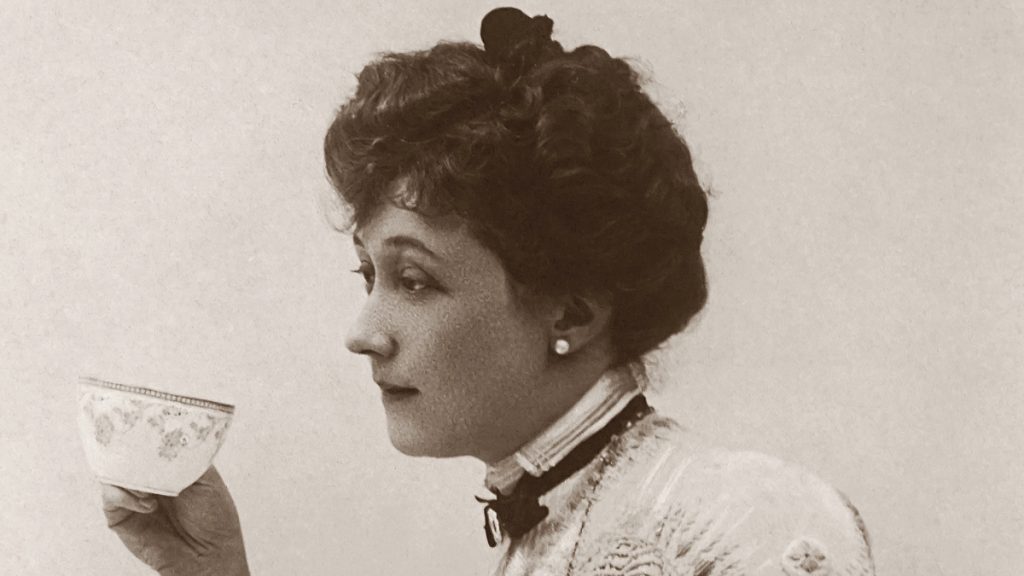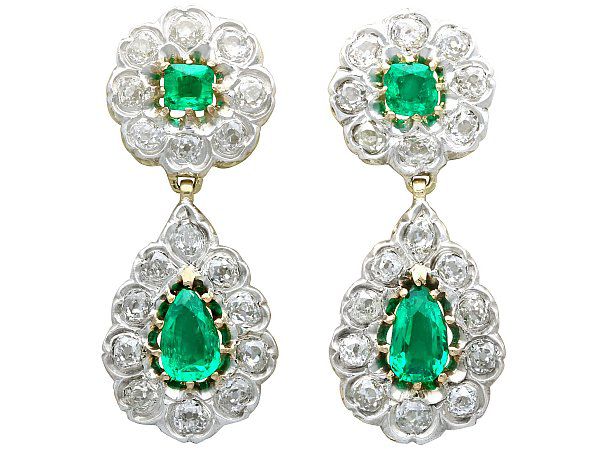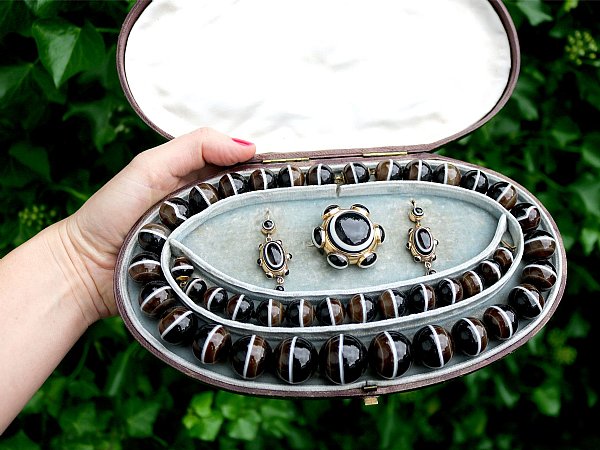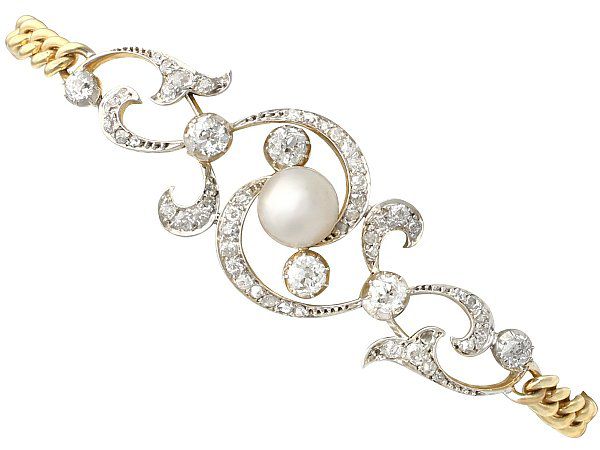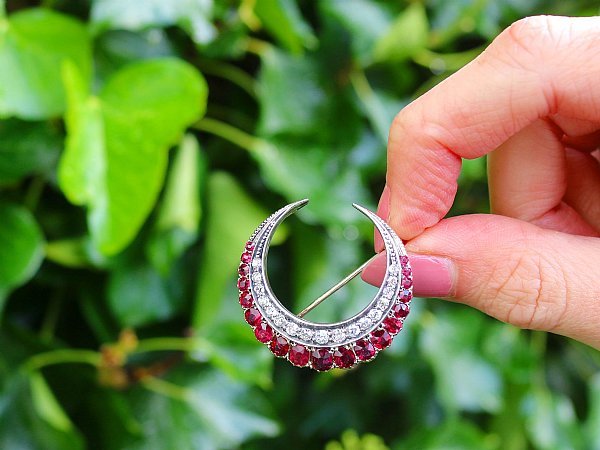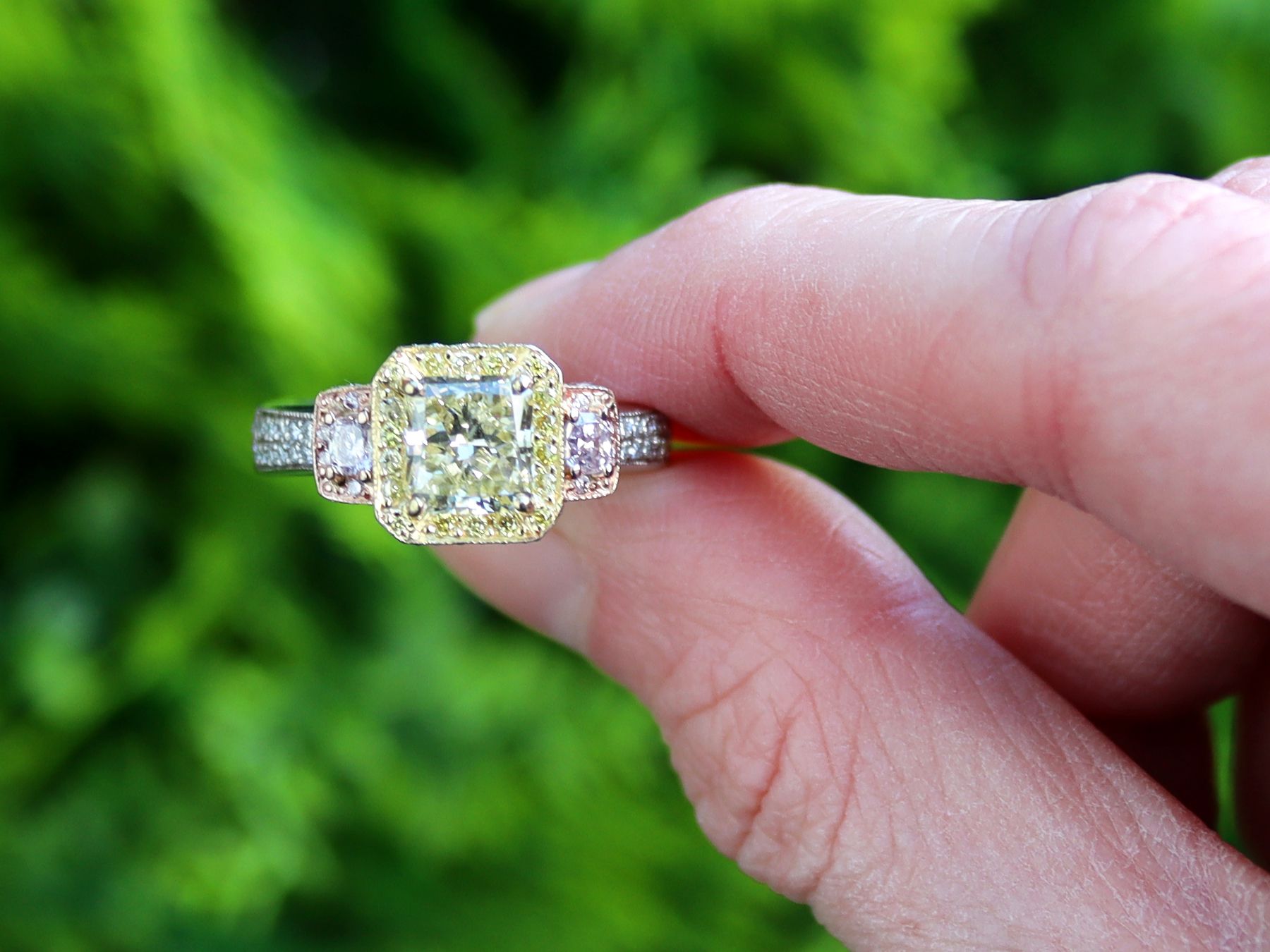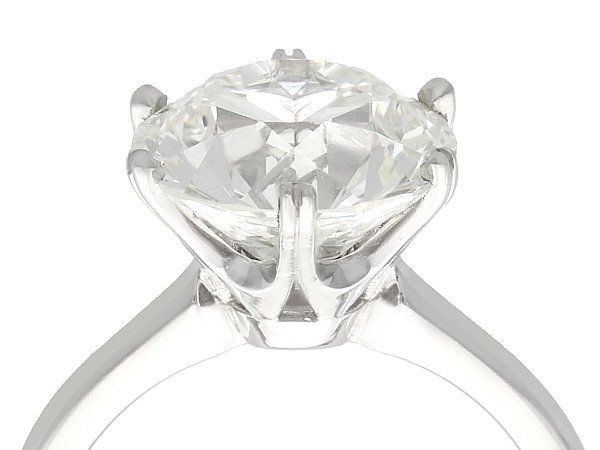There are many eras that are beloved for their unique styles and historical events. The Victorian era is among the most widely-recognised and beloved of all periods. From the architecture, to the fashion, to the all-encompassing presence of the British Empire, the Victorians will always be remembered.
What Is the Victorian Era Aesthetic?
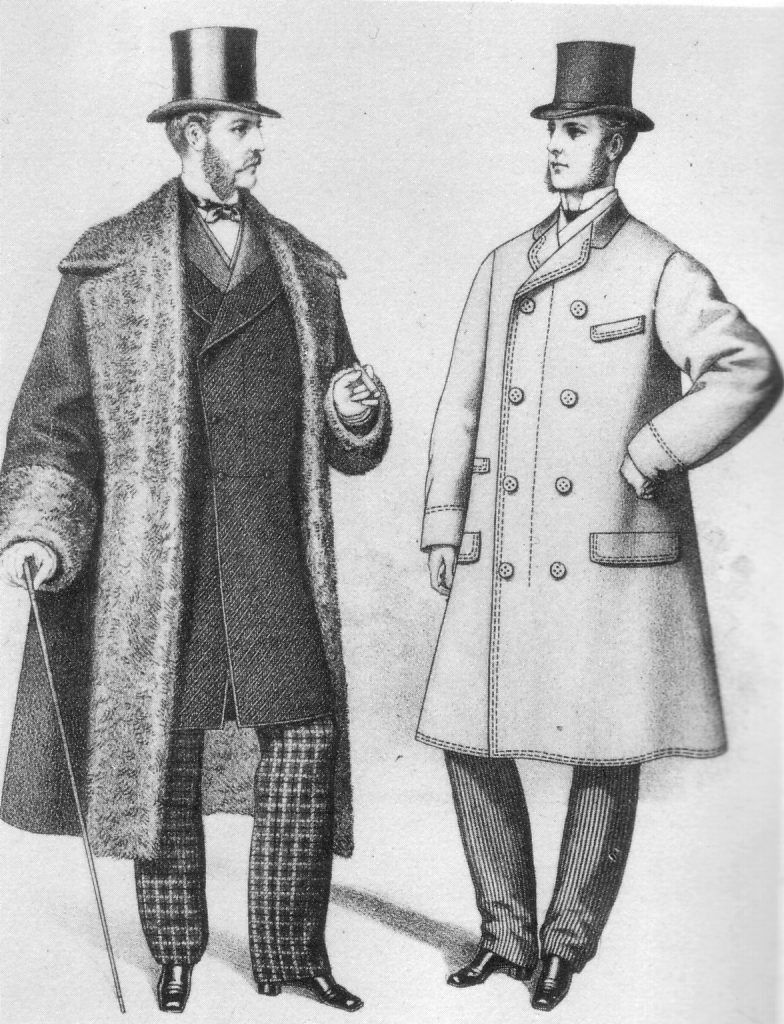
One of the hallmarks of the Victorian aesthetic is in lady’s fashion. Large dresses with many skirts and petticoats, bonnets, and whalebone corsets are all synonymous with the Victorian era. For the gents, sensible suits with moustaches and elegant top hats were all the rage. The image of the perfect gentleman in a period romance who sports a cravat and a frock coat is the archetype of a Victorian man.
Victorian architecture can be found in many countries around the world, owed to the deep roots of the British Empire’s international reach. Buildings from this era are ornate and eclectic. Taking inspiration from previous eras and adding ‘new’ features and twists, Victorian buildings are very distinctive. Buildings like the Natural History Museum, the Palace of Westminster, and the Royal Albert Hall are all standouts in Victorian architecture.
A significant part of Victorian architecture involved revivals from all manner of previous styles. Most famous among these is the Victorian Gothic revival.
What Is Victorian Gothic?
The first Gothic buildings were created in the Medieval period. Prevalent throughout Europe right through to the Middle Ages, this style is typified by pointed arches and flying buttresses. The use of elaborate stained glass windows was also a big feature of Gothic buildings. The midst of the Victorian period saw a significant revival of Gothic aesthetics. Beginning in Britain, this ecclesiastical aesthetic was used for largely for cathedrals.
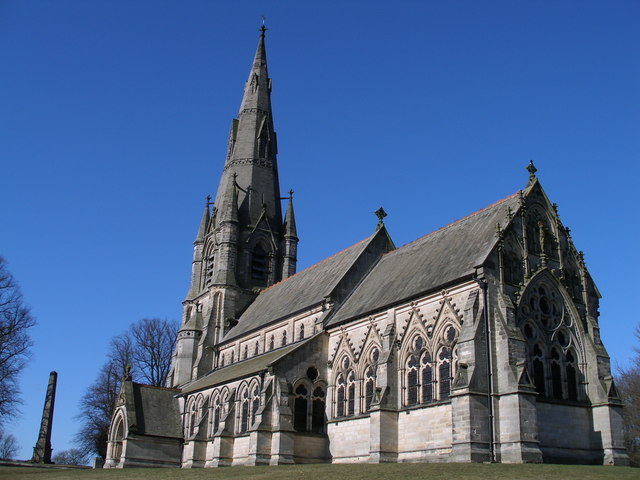
Towards the end of the 19th century, writers like Bram Stoker and Mary Shelley established a clear connection between this architectural style and dark, horror fiction. At this point, ‘gothic’ started to take on a new meaning. The fashion and style of this Victorian literature impacted the fashion that would later be considered ‘gothic’. Dark, heavy fabrics like brocade and velvet contrast with the paper-thin, snow-white nightgowns work by the damsels in these novels. Goths of today often wear corsets or sport hairstyles reminiscent of this era.
Characteristics of Victorian Design
While it can be difficult to reduce the many decades of Victorian design into a simple list, there were certainly some characteristics that were mainstays throughout the period. A key element of Victorian design was a focus on ornate decoration. In housing, this means that Victorian-era homes often have unique gables, steep-pitched roofing, and often three stories of height.
In Britain, the Industrial Revolution enabled mass production of materials like bricks, meaning that housing could be erected up and down the country with less expense than in previous eras. Because of this, a lot of homes in Britain today still maintain the distinctive Victorian features. Bricks with subtly differing red hues, three-part bay windows, and church-like finials are commonplace all over the U.K.
The same commitment to ornamentation can be found in Victorian era decoration and furnishing. The improved affordability of travel led to an increased interest in ‘exotic’ designs. Wallpaper with bright colours and animals from faraway places like India and China were immensely popular. Furniture was largely stained very dark, often with luxurious woods like mahogany and walnut. Finely carved and turned decoration was common for table legs, chests of drawers, and chair backs.
Victorian Aesthetic Dress
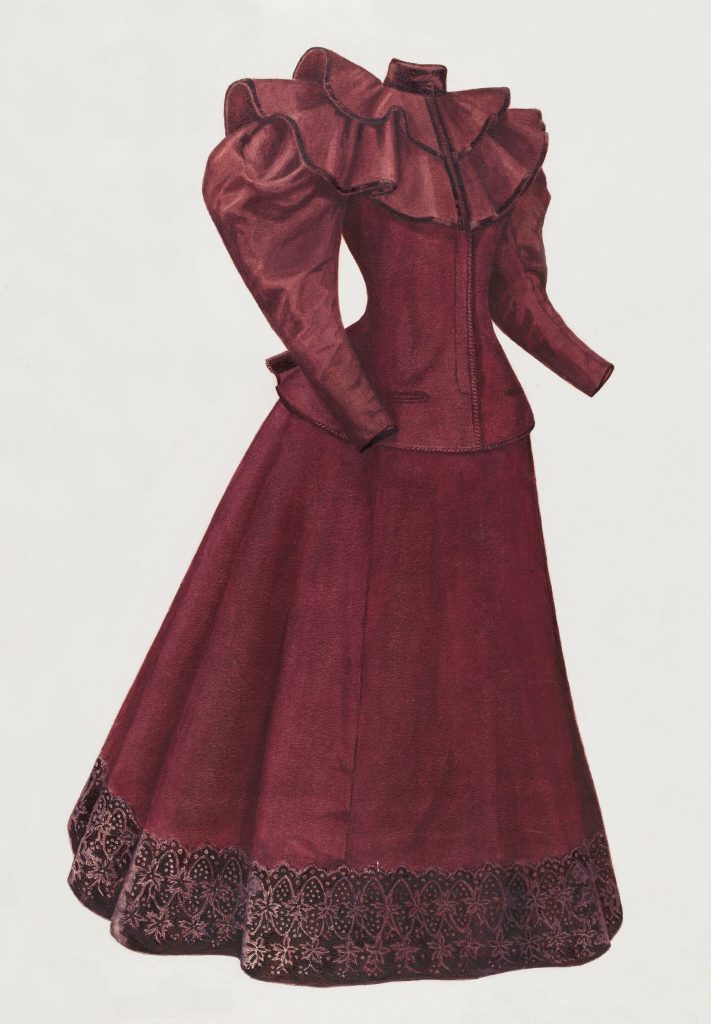
The Victorian aesthetics seen in clothing also often reflected the worldly state of the British Empire. Women of considerable means wore dresses made from coloured silk from the Far East. In the Victorian era, women who were well-off often didn’t work, and so their clothing wasn’t needed to have much practicality. Instead, tight-fitting corsets and layered petticoats were the standard. Embroidered trim and other fine decorative elements were also reserved for wealthy women. Middle class and working women wore similar styles, although lacking the added decoration and luxurious fabrics.
Over the course of the Victorian era, women’s clothes became more form-fitting. Necklines dropped, with significant ‘v’ shapes becoming popular. Off-shoulder sleeves were also stylish in the mid-1800s. By the turn of the 20th century, the prominent bustles and hoop skirts that had exemplified Victorians were much less popular. Instead, tight dresses with bustles that created more of an hourglass or ‘mermaid’ shape rose to the fore.
Men and women wore significant jewellery throughout the Victorian era. For men, pocket watches, signet rings, tie pins, and cufflinks were commonplace. Brooches were a piece of jewellery that was particularly prominent for Victorians, serving as decoration and practicality. They could be worn as ornamentation on a coat lapel just as easily as they could be used to affix a lady’s hairstyle in place.
Victorian jewellery evolved throughout the period, with changing aesthetics and purposes. Queen Victoria herself was massively influential throughout the British Empire, being the closest thing to an international celebrity at the time. As she grew and her life circumstances changed, so did her taste in jewellery. One prominent theme seen throughout Victorian jewellery pieces is the snake. To Victorians, snakes were seen as a romantic icon, representing an eternal love between two people. Snake jewellery includes men’s jewellery just as much as women’s jewellery pieces.
Victorian Jewellery Showcase
Below, you can explore some of our own Victorian jewellery pieces. These items show the distinctive styles and colours seen in jewellery throughout the period. Everything from rings, to Victorian earrings, pendants to brooches, and also bracelets is represented. From looking at these examples, it’s easy to see why this era is so popular for jewellery collectors the world over.

